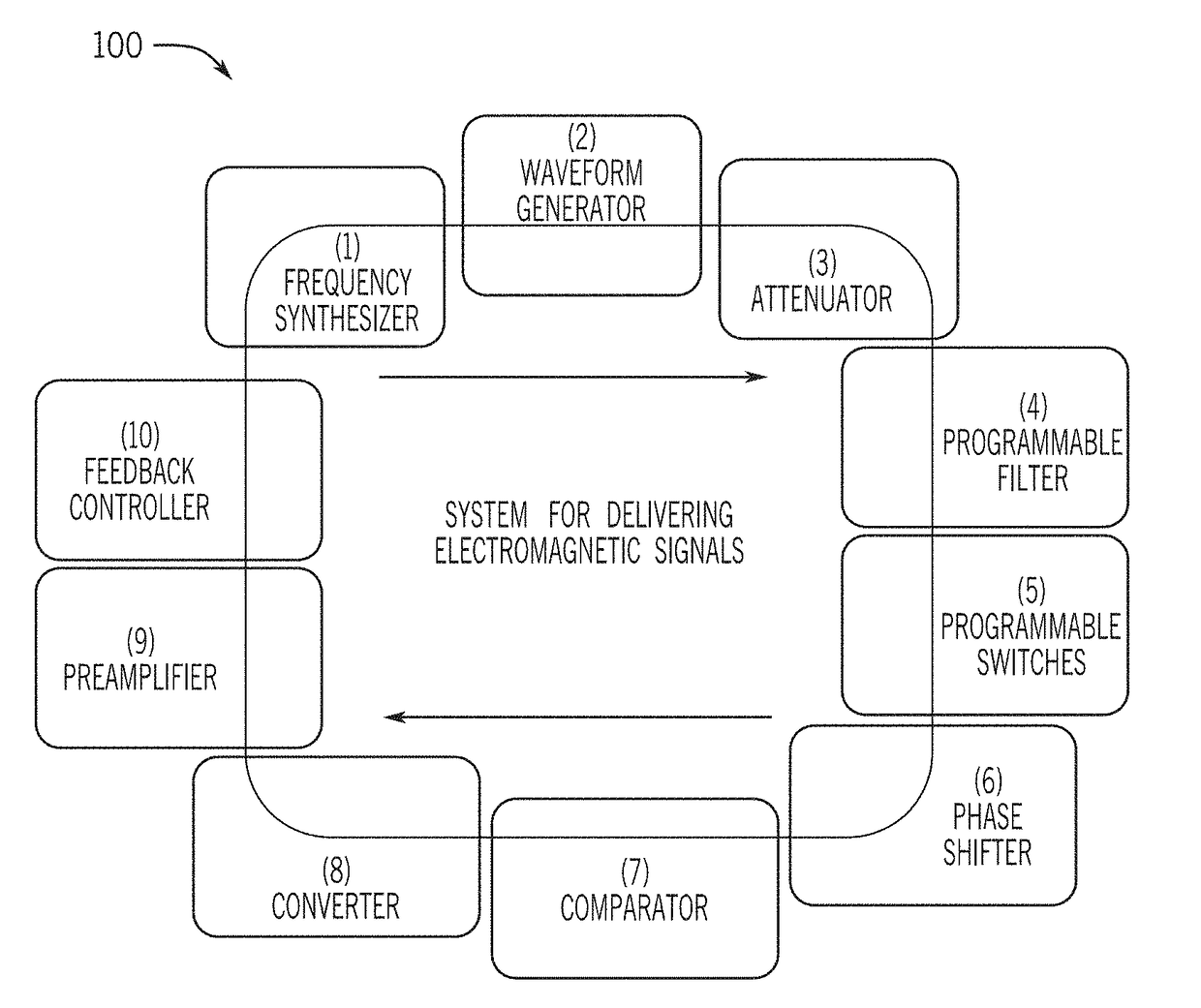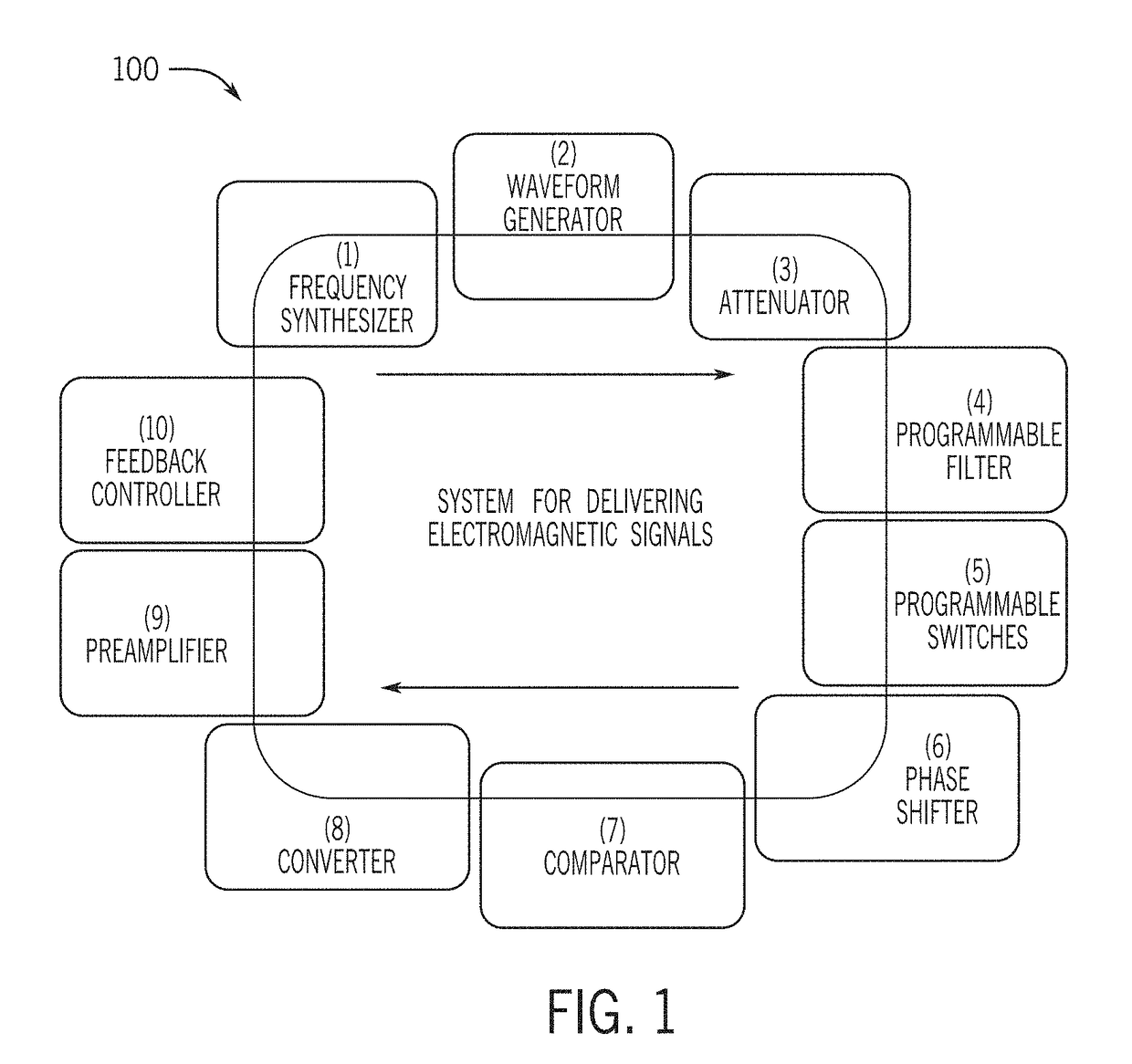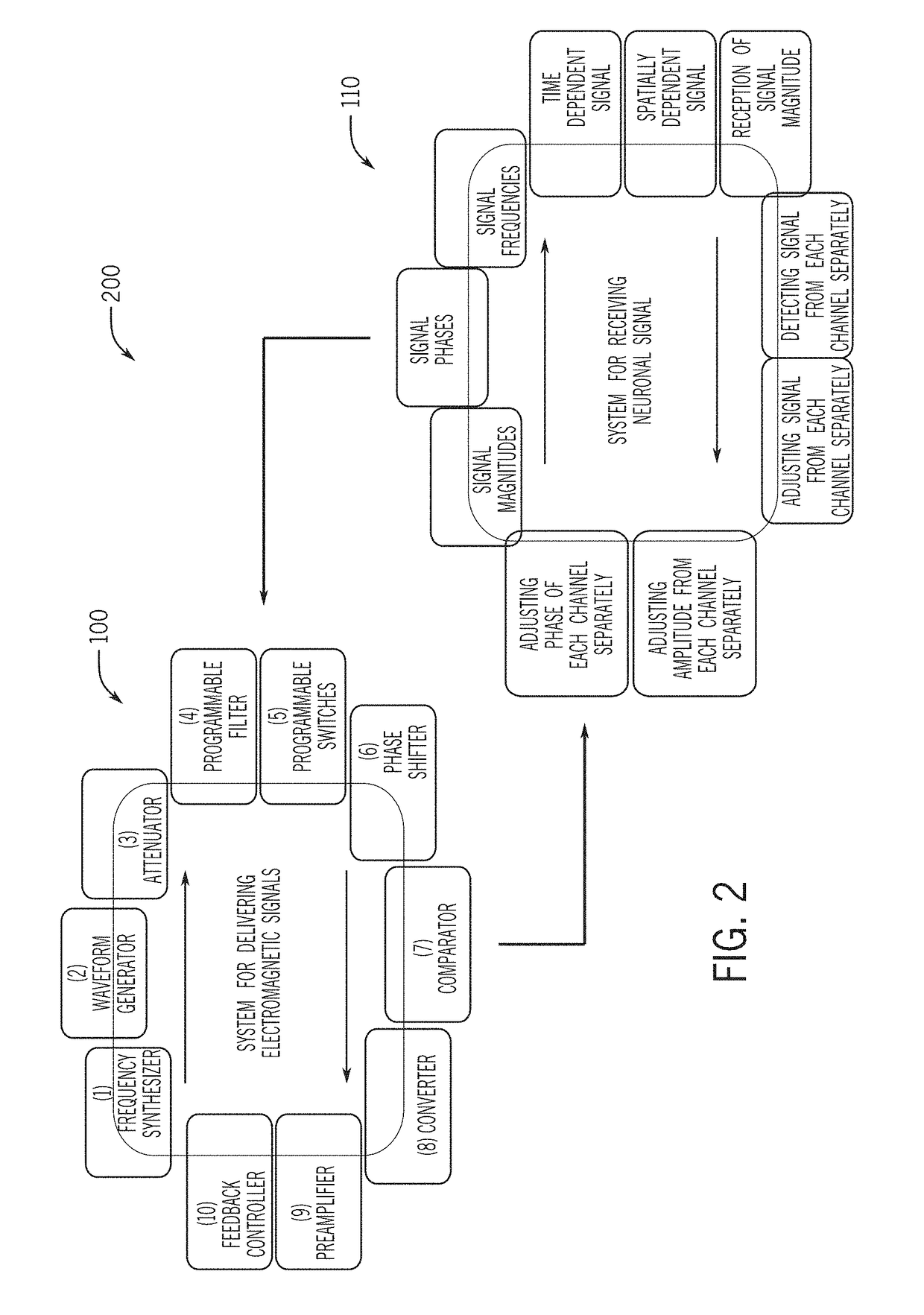System and method for feedback-driven neuromodulation
a neuromodulation and feedback technology, applied in the field of neuromodulation, can solve the problems of inability to provide a system for simultaneous stimulation of the nervous system and signal reception, field and the technology and methods supporting it are in their infancy, and achieve the effects of improving current dbs devices, improving efficiency, and improving safety
- Summary
- Abstract
- Description
- Claims
- Application Information
AI Technical Summary
Benefits of technology
Problems solved by technology
Method used
Image
Examples
example 1
[0055]Epidural electrical stimulation (EES) can facilitate non-voluntary motor activity and enable volitional control of motor functions loss because of the spinal cord injury (SCI). Specifically, the orientation of spinal cord dorsal structures, with respect to the electrical field, play a critical role in determining motor evoked potentials facilitated via EES. In one example, a swine model was used to investigate the relationship between spinal cord neuroanatomy and EES evoked motor responses due to the similarity to humans in terms of anatomical dimensions, size and orientation of the vertebral bone structures and spinal segments. The protocols for selective stimulation of the dorsal roots afferents were designed based on the anatomical measurements of the swine lumbar spinal cord. The differences between L5−L6 and L1−L4 segments were quantified in terms of spatial orientation of the dorsal roots. This protocol included stimulation with quadrupole electrode with sinusoid wavefor...
example 2
[0057]Pulse patterns used in deep brain stimulation (DBS) therapy are thought to induce largely non-specific axonal activation surrounding active electrodes. Given the proximity of active electrodes to regions implicated in side effects of DBS as well as the high levels of anisotropy within and surrounding DBS targets, more selective stimulation approaches allow for effective therapies, while minimizing undesired side effects. In some instances, as referenced above, a spatiotemporal approach based on
[0058]Rotating Field Phase Steering (RFPS) paradigms can be used enhancing orientation selectivity of axonal activation.
[0059]RFPS approaches were evaluated using computational tissue conductance models developed in COMSOL and coupled with axonal models in NEURON to estimate axon activation thresholds for (1) a Medtronic 4-annular-contact channel DBS lead and (2) an Abbott 8-contact array with two annular contacts separated by two rows of 3 segmented contacts. Stimulation was applied in ...
PUM
 Login to View More
Login to View More Abstract
Description
Claims
Application Information
 Login to View More
Login to View More - R&D
- Intellectual Property
- Life Sciences
- Materials
- Tech Scout
- Unparalleled Data Quality
- Higher Quality Content
- 60% Fewer Hallucinations
Browse by: Latest US Patents, China's latest patents, Technical Efficacy Thesaurus, Application Domain, Technology Topic, Popular Technical Reports.
© 2025 PatSnap. All rights reserved.Legal|Privacy policy|Modern Slavery Act Transparency Statement|Sitemap|About US| Contact US: help@patsnap.com



